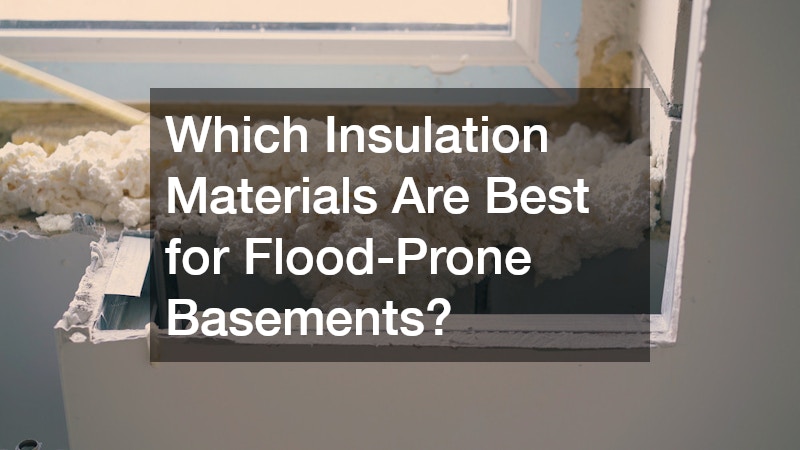Custom home upgrades are more than just aesthetic improvements—they can also provide essential protection and peace of mind, especially when dealing with the consequences of a flooded basement. Basement flooding is a common problem for homeowners, and it can be both emotionally and financially draining. Fortunately, with the right custom home upgrades, it’s possible to significantly reduce the risks and make recovery much smoother.
From water damage restoration to improving ventilation, each choice you make can have a lasting impact on your home’s safety and comfort. Upgrades like advanced drainage systems, sump pump installations, and the use of mold-resistant materials can transform your basement from a potential hazard into a secure and livable space. In addition, using the right cleaning supplies and investing in services like carpet and rug cleaning or mold cleanup can speed up recovery and ensure long-term protection.
This article dives into various options for custom home upgrades that can be particularly useful after a basement flood. You’ll also discover how essential support services—like junk hauling or working with a professional cleaning company—play a crucial role in post-flood management. Let’s explore how you can safeguard your home, improve air quality, and create a healthier environment with smart, forward-thinking upgrades.
What Are the Best Materials for Waterproofing a Basement?

Waterproof Membranes
Waterproof membranes are among the most effective barriers against moisture intrusion in basements. These can be applied internally or externally depending on the severity of your situation and your budget. When considering custom home upgrades, investing in high-quality membranes is a foundational step. There are liquid-applied, sheet-applied, and self-adhering varieties, each with unique benefits and applications.
Sealants and Paints
Using specialized sealants and paints is another way to safeguard your basement from moisture. These are particularly useful for minor seepage and surface dampness. While not a complete solution, combining sealants with other custom home upgrades enhances their effectiveness. A fresh coat can also help prep walls for mold cleanup, creating a barrier that slows growth.
Drainage Systems
Interior and exterior drainage systems play a critical role in preventing basement flooding. French drains, sump pumps, and perimeter drains are some of the common installations. After a flooded basement clean up, upgrading or installing these systems ensures future protection. Regular maintenance and professional water damage restoration also keep these systems functioning optimally.
How Can I Prevent Water from Entering My Basement?
Grading and Landscaping
Your home’s exterior landscaping has more impact than you might think. Proper grading ensures that rainwater flows away from your foundation instead of pooling near it. This is one of the most overlooked yet effective custom home upgrades you can make. For homes already dealing with flooding issues, this solution offers long-term relief.
Downspout Extensions
A simple but powerful upgrade involves extending your downspouts. This change can direct water several feet away from your foundation, helping to avoid future basement flooding. It’s an ideal project to pair with other outdoor custom home upgrades like channel drains or water redirection systems.
Exterior Drainage Solutions
Installing French drains or gravel trenches outside your home can effectively carry water away before it becomes a problem. These exterior systems, combined with regular junk hauling and debris management, keep your property free of blockage and functioning smoothly during storms.
What Upgrades Can Improve Air Quality After Flooding?
Dehumidifiers
Flooded basements create the perfect breeding ground for mold and mildew. Dehumidifiers help maintain optimal humidity levels, making them an essential part of your custom home upgrades. These devices also aid in carpet and rug cleaning by speeding up the drying process and preventing mold growth.
Air Purifiers
Air purifiers with HEPA filters help remove airborne contaminants, including mold spores. After any flooded basement clean up, these systems improve indoor air quality and offer long-term benefits. Some models even work in tandem with existing HVAC setups, maximizing their effectiveness.
Ventilation System Enhancements
Improving your home’s ventilation system can reduce moisture buildup and promote better airflow. Custom home upgrades in this area may include adding exhaust fans, widening vents, or incorporating smart climate control systems. These changes work especially well when paired with mold cleanup efforts and regular use of a lint free towel for surface moisture.
Which Insulation Materials Are Best for Flood-Prone Basements?

Water-Resistant Insulation Options
Standard fiberglass insulation absorbs water and becomes a haven for mold. Switching to water-resistant options like closed-cell spray foam is a wise investment. These materials are less likely to harbor bacteria and help in long-term water damage restoration.
Foam Insulation
Foam boards or spray foam insulation are excellent for flood-prone areas. They resist water penetration and provide strong thermal performance. Integrating this into your custom home upgrades offers both energy efficiency and enhanced protection against future flooding.
Vapor Barriers
Adding vapor barriers between walls and insulation prevents moisture transfer. This upgrade is especially important for older homes where basement sealing may not be up to modern standards. Combined with cleaning supplies tailored for mold prevention, vapor barriers create a safer indoor environment.
Should I Consider Sump Pumps or Backup Systems?
Choosing the Right Sump Pump
Not all sump pumps are created equal. Look for models that offer high-capacity performance and alarm systems. As part of your custom home upgrades, choosing a reliable sump pump can make all the difference when water starts to rise unexpectedly.
Battery Backup Systems
A sump pump is only effective if it has power. Adding a battery backup ensures your system works even during outages. This becomes especially important when scheduling junk hauling or cleaning company services, as you’ll want the basement dry before they arrive.
Maintenance Tips for Sump Pumps
Regularly inspect and clean your sump pump. Remove any debris, and test the float switch to ensure it’s working correctly. Keeping up with maintenance reduces your dependency on emergency flooded basement clean up and helps avoid unnecessary water damage restoration expenses.
How Can I Make Sure My Electrical Systems Are Safe?
Elevating Electrical Components
Raising electrical outlets, wiring, and fuse boxes above potential flood levels is one of the most crucial custom home upgrades you can make. This not only prevents short circuits but also protects your investment in case of future flooding. It’s especially important in basements and ground-level rooms that are most vulnerable to water damage. Contractors may recommend installing conduit or protective casings around exposed wires. These additions help keep moisture out and ensure long-term reliability. If your home has previously experienced flooding, it’s worth having an electrician re-evaluate existing components and suggest modern, water-resistant alternatives for added protection.
Using GFCI Outlets
Ground Fault Circuit Interrupter (GFCI) outlets are designed to shut off power when they detect irregular flow. Installing these in your basement offers additional safety and aligns well with other water-resistant upgrades. GFCIs are now standard in areas where moisture is common, including kitchens, bathrooms, and laundry rooms—but basements are often overlooked. Make sure your entire lower level is fitted with GFCIs to reduce the risk of electrical shock during or after a flood. You can also explore tamper-resistant models if children or pets frequent the space.
Annual Electrical Inspections
Scheduling yearly inspections ensures that all electrical systems are functioning properly and up to code. A licensed water damage contractor may also collaborate with electricians to confirm that your setup is flood-ready. These inspections can catch outdated wiring, corroded circuits, or loose connections before they cause serious issues. If you’ve recently completed any custom home upgrades or waterproofing measures, include a follow-up inspection to verify compatibility. A proactive approach to maintenance gives you peace of mind and helps you avoid costly repairs down the line.
What Flooring Options Are Best After Water Damage?

Tile and Concrete Flooring
Tile and sealed concrete are durable, water-resistant, and easy to clean. These materials are ideal custom home upgrades for flood-prone areas. They can also be easily maintained using standard cleaning supplies.
Water-Resistant Vinyl Flooring
Modern vinyl options mimic wood and tile while offering superior water resistance. These floors pair well with radiant heating systems and are simple to maintain with a lint free towel and mild cleansers.
Carpet Alternatives
While carpet and rug cleaning is helpful, switching to alternative materials like cork or rubber flooring reduces the risk of mold and mildew. These choices are practical, stylish, and align with a modern approach to custom home upgrades.
What Kind Of Drainage Upgrades Should I Invest In?
French Drains
French drains redirect water away from your home’s foundation using a trench filled with gravel and a perforated pipe. This method is highly effective and often used in both new builds and retrofitted custom home upgrades.
Channel Drains
Installed in driveways or patios, channel drains help manage surface water before it reaches your basement. These upgrades work especially well in tandem with flooded basement clean up and water damage restoration efforts.
Standing Water Solutions
Other methods include grading, sump pump systems, and catch basins to eliminate standing water. Don’t overlook regular junk hauling and maintenance to prevent blockages in your drainage system.
What Are Effective Mold Prevention Strategies?
Regular Inspections
Frequent inspections can catch mold before it becomes a serious issue. Look for signs of moisture, water staining, or discoloration—especially after heavy rains or plumbing incidents. Basements, crawl spaces, and areas near windows or doors are particularly vulnerable. These checks should be part of your routine custom home upgrades and can help identify small problems before they grow into full-scale water damage restoration projects. Documenting each inspection can also provide valuable proof for insurance claims or contractor visits.
Using Mold-Resistant Products
From drywall to paints and flooring, mold-resistant products are widely available and increasingly cost-effective. For example, fiberglass-backed drywall or water-resistant insulation can make a significant difference in high-risk areas. These options are especially useful in basements, laundry rooms, and bathrooms, where humidity levels are naturally higher. Pairing these upgrades with proper ventilation—such as installing dehumidifiers or exhaust fans—also improves their effectiveness. Over time, they make cleaning supplies more effective and reduce the frequency of deep mold remediation services.
Mold Remediation Techniques
Professional mold cleanup services use specialized equipment—like HEPA vacuums, antimicrobial foggers, and air scrubbers—to eliminate spores from your home. If you’ve experienced recent flooding, call a water damage contractor immediately to prevent microbial growth from taking hold. A cleaning company can also offer ongoing treatments and guidance, helping to maintain a mold-free environment. This might include scheduled maintenance visits, sealing vulnerable areas, and applying long-term mold inhibitors that go beyond surface-level cleaning.
How Should I Prepare for Future Flooding?

Developing an Emergency Plan
Create a step-by-step plan that outlines what to do in case of basement flooding, and review it with all household members. Include contact numbers for your water damage contractor, insurance providers, and a trusted cleaning company, as well as pet evacuation arrangements and a list of critical possessions to prioritize. Store a printed copy in a waterproof bag and save digital copies to your phone and cloud storage. Practicing your plan—just like a fire drill—can greatly reduce panic during real emergencies.
Storing Important Documents
Use waterproof containers or digital backups to protect vital information like birth certificates, insurance policies, financial records, and home deeds. Place physical copies in high shelves or attic storage if you don’t have a fireproof safe. For digital protection, use encrypted cloud storage or external drives. This becomes even more important if your home regularly experiences flooding, as repeated exposure can warp or destroy paper records permanently. Taking these steps also makes the recovery process smoother when applying for assistance or insurance reimbursement.
Community Resources and Support
Tap into local programs for flood relief and education. Municipalities often maintain directories of trusted water damage contractors, mold cleanup services, and emergency response contacts. Many communities offer free or low-cost mold cleanup, water damage restoration, and hoarder cleanouts as part of disaster recovery plans—especially after declared weather events. Sign up for neighborhood alerts and attend town hall meetings to stay informed about prevention efforts or grant programs. Partnering with your local network can make recovery feel more manageable and far less isolating.
Conclusion
Custom home upgrades are one of the most proactive ways to protect your home from the devastating effects of basement flooding. From installing waterproof membranes and effective drainage systems to elevating electrical components and choosing the right flooring, each upgrade adds a layer of protection and peace of mind.
In addition to structural changes, leveraging support services like junk hauling, carpet and rug cleaning, or hiring a reliable cleaning company can streamline the post-flood recovery process. Items like cleaning supplies and a quality lint free towel can also help manage everyday moisture control, while mold cleanup and water damage restoration offer long-term solutions.
By making smart, targeted improvements and maintaining a state of readiness, you not only reduce your home’s vulnerability to flooding but also create a more comfortable, resilient living space. These custom home upgrades are investments in both safety and quality of life—a combination that no homeowner should overlook.
